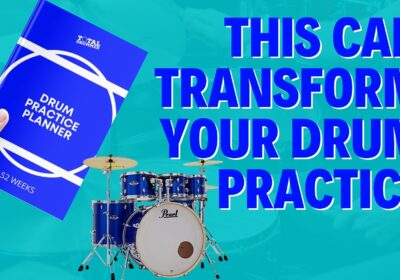A guide to help choose drum stick sizes
Learn which drum sticks you should buy
This Guide Helps You Know Which Drum Stick Sizes To Choose

It can be a nightmare trying to choose drum stick sizes. Walking into a well stocked music shop to purchase your first pair of drum sticks may cause you to stop dead in your tracks as you are faced with the huge wall of pigeon holes, each stacked full of different sizes and varieties of things with which to hit drums. It can be daunting but here is a little guide that may help you choose drum stick sizes.
 The choice of materials is vast with some of the popular woods used being rosewood, which is a very dense and hard wood; maple, which is light and soft; hickory, which is slightly harder and more durable than maple; and Japanese oak, which is very hard, durable and heavy. Beyond wood, a drummer may also consider carbon fibre, graphite, aluminium, fibre glass, plastic, sticks with LEDs that illuminate upon impact, or ergonomic sticks, which fit the contours of the hand. There is also the market of signature sticks, of which just about every well known drummer in the professional arena has designed to their personal specifications. Most just offer an alternative size, weight or balance but there are some more unusual sticks on offer.
The choice of materials is vast with some of the popular woods used being rosewood, which is a very dense and hard wood; maple, which is light and soft; hickory, which is slightly harder and more durable than maple; and Japanese oak, which is very hard, durable and heavy. Beyond wood, a drummer may also consider carbon fibre, graphite, aluminium, fibre glass, plastic, sticks with LEDs that illuminate upon impact, or ergonomic sticks, which fit the contours of the hand. There is also the market of signature sticks, of which just about every well known drummer in the professional arena has designed to their personal specifications. Most just offer an alternative size, weight or balance but there are some more unusual sticks on offer.
Basic Features
However, each stick consists of the same basic design features. These are the butt (bottom end), shaft (straight area, which the hand grips), shoulder (tapered area), and tip (which strikes the drum head). The tapered area could be very gradual on a lighter drum stick or very severe on a heavier stick.
Furthermore, since 1958, thanks to Joe Calato of the American drumstick company Regal Tip, we also have the nylon tip. In reaction to the damage caused to the tips of wooden drum sticks, Calato designed this nylon tip to protect the tip whilst also achieving a brighter, more articulate sound. The wood tip offers a warmer, more organic sound.
Beyond the bright sounding nylon tip, the timbre can dramatically change depending on the tip of the stick. Many different shapes and sizes are offered in this market but the popular types are a round tip, olive tip, barrel tip or pointed tip. The round tip is bright and focused, the olive tip offers full, low tones and increased durability, the barrel and pointed tips both offer a medium tone, although the barrel has more focus due to it’s decreased contact area.
So which stick do you choose?
Luckily a universally recognised numbering system was devised in the 20th century to help us poor drummers out. Although different manufacturers vary the sizing slightly, it does give us a rough guide as to what we should buy. In this system a letter and a number is assigned to the sticks. The letter refers to the intended application of the stick as denoted by S, A, and B. The A confusingly stands for orchestra. These sticks are the lightest and were initially intended for big band type group playing. The B stands for band, with the original application of brass bands and symphonic concert bands. These were heavier than the A sticks but still able to play at softer dynamics. The third letter, S, stands for street and were designed as the largest and heaviest available. Street uses included marching band and drum corps. The accompanying number simply refers to the circumference of the stick and popular numbers are five, seven, and two. The larger the number, the smaller the circumference.
Ok, still hanging on through all that info? Here’s the important bit then.
Although bearing the A for orchestra in the original plan, 5A are a very popular choice as the standard beginners drum stick for drum kit applications. These are a sensible place to start for most players. For younger drummers who require a lighter stick, 7A
is a great alternative. If you’re a big person and want to hit hard, maybe try a 5B
or even 2B
if you’re hardcore.
With regards to which wood, whether or not a nylon tip is important, etc, it really is a personal decision. There is no right or wrong and it takes many years of experimentation to find what works best for each player. The sensible action to take is to go to your local music shop, pick up some different sizes and get a feel for them. If they feel good, then go for it.
If you are picky, many drummers will roll them along a flat surface at the shop to detect any imperfections causing ‘bananas’. If you’re even more picky, some drummers will tap the sticks together in such a way as to ascertain the fundamental tone of the stick, ensuring that each stick is the same and therefore the notes played by them will sound even.
I hope that was an interesting insight and now you have some idea of what to look for when you choose drum stick sizes. Have fun trying out the different sizes until you find your perfect match.
As you love drumming, you may want to browse the other lessons available at Total Drummer. Check out the free lessons, single lessons, mini courses and main courses, as well as the drum less playalongs and the charts of famous songs.
If you are looking for beginner drum lessons then you are in the right place. Click the image below and you can access the beginner drum lesson course totally free.
As you love drumming, you may want to browse the other lessons available at Total Drummer. Check out the free lessons, single lessons, mini courses and main courses, as well as the drum less playalongs and the charts of famous songs.

FREE Timing Course
By clicking below you can gain access to a FREE ‘Drummer Timing 101’ drum course that will give you the knowledge, tools and exercises that you need to quickly get your timing up to the level it needs to be.
It will provide:
- The two main types of timing to master
- MP3 backing tracks to practice with and develop great timing
- Full sheet music for all exercises
- Video demonstrations of every exercise
And more than that you will also get a ton of other great free drum resources to make you a better drummer such as playalong tracks, articles, exclusive video lessons and more. And it’s all free!
Watch the video to get a feel for what the drummer timing 101 course entails and then scroll down to get the course immediately.
Start today and develop perfect timing
So let’s start the course today. Do it now and begin your drummer timing 101 course and start developing perfect timing. It won’t happen instantly but if you follow the lessons in the course you will start to feel the change very quickly.
If at any time you’re not digging the content, simply unsubscribe. There’s nothing to lose and your details won’t be shared with anyone, nor will you be bombarded with sales type emails. Just great free drum content that I hope provides real value for you.



